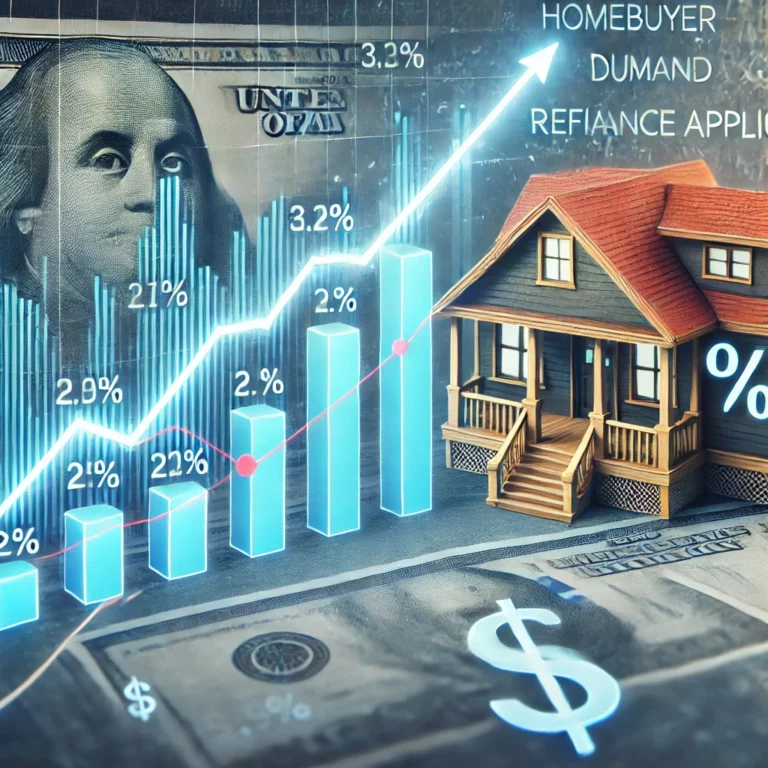
Introduction
Mortgage interest rates have continued their upward trajectory, marking the third consecutive week of increases and reaching levels not seen since August. This rise in rates has triggered a significant decline in demand from both prospective homebuyers and current homeowners looking to refinance. According to the Mortgage Bankers Association’s (MBA) seasonally adjusted index, total mortgage application volume fell by a staggering 17% last week compared to the previous one. This article delves into the implications of these rising rates and explores the current state of mortgage demand.
The Steady Rise in Mortgage Rates
The average interest rate for 30-year fixed-rate mortgages, for loan balances of $766,550 or less, increased to 6.52%, up from 6.36% the previous week. Accompanying this was a rise in points from 0.62 to 0.65 for borrowers putting down 20%, making home loans significantly more expensive. This rate hike represents a financial hurdle for both new buyers and those considering refinancing.
Refinancing, in particular, felt the brunt of the rate surge, with demand plummeting 26% week-over-week. Although refinance activity is still 111% higher than it was a year ago—when rates were much steeper—this recent downturn reflects a growing hesitancy among homeowners to take advantage of current rates.
Impact on Homebuyers and the Housing Market
Applications for home purchase mortgages fell 7% last week, although they remained 7% higher than the same period last year. Despite the higher mortgage rates, more homes on the market are creating opportunities for some buyers, especially first-time homeowners. Joel Kan, an economist with the MBA, remarked that demand from prospective first-time buyers is holding up, particularly in markets where housing inventory is improving.
“FHA purchase applications remained steady, despite the rise in rates,” said Kan. “First-time buyers are still participating in the market due to improving housing inventory, which may soften the blow of increased borrowing costs.”
The Economic Outlook and Mortgage Demand
While mortgage rates remain a primary concern for both buyers and refinancers, broader economic uncertainties are also weighing on potential buyers. With an impending federal holiday and the looming November elections, many are pausing their home purchase decisions until they can better gauge the direction of the economy.
“Homebuyers are less focused on interest rates right now and more concerned about the shape of the economy in the months ahead,” said one industry analyst. This sentiment suggests that economic stability, or lack thereof, may play a more significant role in the housing market in the coming months than interest rates alone.
The Future of Mortgage Rates: What to Expect
With no clear indication of when mortgage rates will level off, the housing market is poised for continued volatility. Many experts predict that rates could rise further if inflation continues to trend upward, making affordability a central issue for many potential buyers.
Despite the challenges, some homeowners could still benefit from refinancing if they act quickly. As the rates a year ago were more than 100 basis points higher, those who purchased homes in the last 12 months may still find refinancing advantageous. However, timing will be key as rates continue to fluctuate.
Conclusion
The recent rise in mortgage interest rates has caused a sharp decline in both refinance and home purchase applications, with prospective homebuyers and current homeowners alike feeling the squeeze. While some buyers are still finding opportunities due to increased housing supply, broader economic concerns may keep others on the sidelines until after the November elections. As mortgage rates continue to climb, the housing market is likely to experience ongoing shifts, and both buyers and refinancers should carefully weigh their options in this evolving financial landscape.